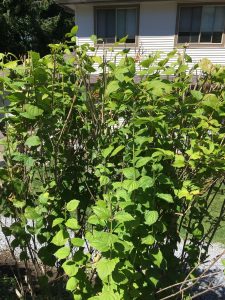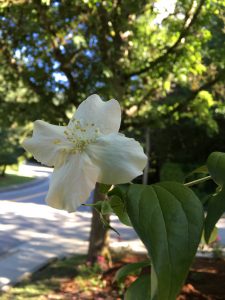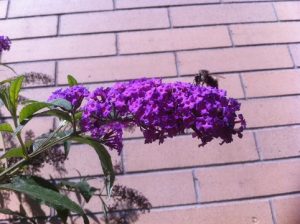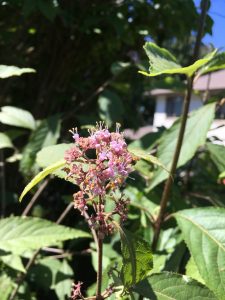Today I found out about an interesting pruning “mishap” from which we can learn several lessons. It starts out like many other mid-season pruning jobs with extendable power shears and fully flushed out shrubs. The foreman went in and pruned everything, especially off the tops.
But there is a glitch. You can’t treat all of your shrubs the same way because different species grow and flower differently. This is another clear illustration of the importance of plant identification. It’s crucial knowing a little bit about all of your shrubs on site.
And keep in mind the rule: it’s normally best to prune after flowering.
Home gardeners
Home gardeners look out at their gardens all year, season after season and they enjoy their flowering shrubs. When you come in and eliminate their one annual flower show, they get angry. Beware of home gardeners!
So, this blog post covers three shrub species: Callicarpa bodinieri, Philadelphus and Buddleja davidii. Only the Philadelphus was past its flower peak which normally runs from June to July on the West Coast. In this landscape example the shrub was clearly past its flowering peak and therefore a reasonable target for pruning.
Unfortunately, the other two shrubs were poor pruning targets for July. Buddleja davidii flowers from June to September and clearly the few remaining flowers after pruning are still immature.
So the gardeners know they will miss out on their usual flower show which would have looked something like this.
The third shrub, Callicarpa bodinieri, was by far the worst choice for July pruning because it reaches its flowering peak from June to August AND the flowers turn into showy purple fruits from September to October. I personally find the fruits much nicer than the flowers but we have to keep the flowers on to get fruit.
Luckily, the Callicarpas aren’t as imposing as the other two shrubs so only their tops went missing. But of course for veteran home gardeners any dimished flower show is apocalypse.
Clean-up
To make matters worse, the clean-ups were rough and many other plants got trampled during the procedure. We’ve already covered pruning debris clean-up in an earlier blog. Clean-ups must be perfect to match perfect pruning.
Conclusion
This was an extremely useful lesson showing how:
a) pruning must be timed for after peak flowering times
b) all shrubs can’t be pruned at the same time as if they were the same species
c) pruning debris clean-up must be perfect just like the pruning work and care must be taken not to destroy other garden plants during clean-up
d) plant identification skills are extremely important, don’t stop learning










